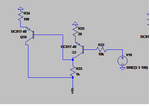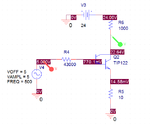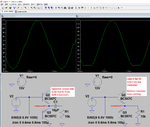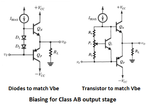tictac
Full Member level 5
Hi
I have a transistor that work at active mode . The base input of the transistor is about 0 to 10 volts. The collector is connected to the 24 volts.The emiter output is about 0.5 volts to 9.5 volts.
But I want that the emiter output is changing form 0 to 24 volts. The current of this voltage is about 100mA.
How can I change my circuit for changing from 0 to 24 volts?

Regards.
I have a transistor that work at active mode . The base input of the transistor is about 0 to 10 volts. The collector is connected to the 24 volts.The emiter output is about 0.5 volts to 9.5 volts.
But I want that the emiter output is changing form 0 to 24 volts. The current of this voltage is about 100mA.
How can I change my circuit for changing from 0 to 24 volts?

Regards.









